If we’ve learned anything in the performance marketing world anything, it’s that advertising platforms like Facebook and Google Ads have much more (and much better) data than any individual advertiser or third-party vendor. Because of the large amount of data that these platforms have, they are able to provide improved tracking and targeting tools directly to advertisers.
A tool that we find valuable is the lookalike model. With a lookalike model, advertisers provide a source of audience data to an ad network which then matches it to other users on their network, with the goal of finding new audiences that most resemble the characteristics of the source audience data.
The theory behind lookalike models is that people who exhibit certain characteristics or perform certain actions (i.e. sign up for a trial, purchase a product, etc.) will tend to have some commonly identifiable traits that the ad platforms can parse. This theory has been proven true: the lookalike model has been such a success, in fact, that it’s become one of the primary targeting methods for Facebook advertisers.
And although Facebook Lookalike Audiences tend to get the most attention when discussing lookalike modeling, Google Ads has a comparable but extremely under-utilized targeting method of their own: Similar Audiences.
What Are Similar Audiences?
Similar Audiences are essentially Facebook Lookalike Audiences for the Google Display Network (GDN), YouTube Ads, and Gmail Ads.
To figure out which people “look” most like an existing audience, Google uses a machine-learning algorithm to scrutinize a source audience (like a website visitor list) to find shared member characteristics, and then it finds new people with characteristics similar to those of the source audience.
For example, Google Ads Display Similar Audiences use cookie data from people who visit third-party websites that are part of Google’s Display Network to determine the browsing behavior, and characteristics implied by that behavior, of a source audience. It then looks for users whose browsing behavior indicates they have similar characteristics or interests to this source audience and places them into a Similar Audience that advertisers can target within Google Ads.
Here’s how the process works in Google’s words:
Google Ads looks at browsing activity on Display Network sites over the last 30 days, and uses this, along with our contextual engine, to understand the shared interests and characteristics of the people in your remarketing list.
For example, if a large number of your converters have an auto comparison website in their browsing history, Google will look for people who’ve either directly been browsing auto comparison websites or sites that attract visitors with similar characteristics to auto comparison site visitors in order to build a “similar to converters” audience.
Do Similar Audiences Work?
Facebook advertisers have seen a lot of success with lookalike audiences, but do Google’s Similar Audiences show the same potential?
First, the performance data. According to both our own internal data and external benchmarks, Similar Audiences certainly do provide a boost compared to other prospecting methods.
According to Google, for example, Similar Audiences can boost performance to the tune of 60% more impressions, 48% more clicks, and 41% more conversions.
The relative performance of Similar Audiences will vary on a case by case basis, but our own performance data shows that Similar Audiences tend to outperform other prospecting methods on GDN. Here’s an example from one of our Display-heavy accounts that utilize Similar Audiences:

For this client, Similar Audiences show a clear performance improvement with a CPA that is 23% lower than other prospecting and conversion rate which is a full 122% better.
Another account showed an even more pronounced performance increase when Similar Audiences were utilized, as shown here:

In this case, nothing was working for prospecting until Similar Audiences were introduced – there wasn’t a single conversion. But with the use of Similar Audiences, conversions started coming in at a favorable CPA and CVR. Again, Similar Audiences are the clear winner over other prospecting.
In fact, our internal data shows Similar Audiences can almost match the performance of remarketing.

Even though the remarketing CPA is slightly better, for this particular account Similar Audiences slightly outperforms remarketing in terms of conversion rate. Not every advertiser will experience the same results, but our internal data does show that Similar Audiences tend to perform better than other prospecting methods, and can rival remarketing performance.
How To Add Similar Audience Targeting To Your Campaigns
Creating Similar Audiences
For every pixel-based Remarketing List with at least 500 cookies, or for every Customer Match list you upload with at least 1000 emails that Google can match to users, Google will automatically generate a Similar Audience.
Keep in mind, however, that if you upload first-party data using Google Ads’ Customer Match feature, it will not be possible to build a Display Network Similar Audience based on that data. This is because GDN needs cookied browsing behavior on its users in order to build a Similar Audience.
The good news is that since Google is the sole owner of Gmail and YouTube, it’s still possible to build Similar Audiences using first-party data for both Gmail and YouTube. Google can match the e-mails you provide with Gmail or YouTube users and build a similar audience based on those users’ characteristics.
With Customer Match, you can take advantage of your first-party data to build Similar Audiences that can be targeted with Gmail ads or YouTube ads, but not with Google Display ads since GDN operates through third-party sites.
Alternatively, you can use pixel-based Remarketing Lists which are built from either Google Ads conversion and remarketing pixels or from linked Google Analytics remarketing audiences. Pixel-based Remarketing Lists can serve as source audiences for Similar Audiences on the Display Network and on YouTube, but not on Gmail due to Google’s privacy restrictions.
In order to create a Similar Audience, you must first either build a Remarketing List in Google Ads or a remarketing audience in Google Analytics.
You can create a new Remarketing List in Google Ads by clicking on the red button in the top left of the “audiences” section of an account shared library, which gives you the following options in a dropdown menu:
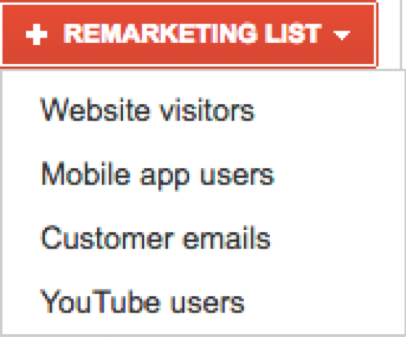
To create a remarketing audience in Google Analytics, go into the Admin tab and select the property view in which you want to create your remarketing audience. From there, click “Audience Definitions” > Audiences and you’ll see the options below:
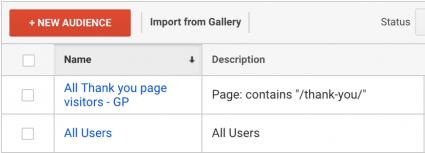
Once you create an audience in Google Analytics, it will populate in the shared library for the linked account in Google Ads.
In the Google Ads shared library audience section, you can see a full list of both existing Remarketing Lists and the auto-generated Similar Audiences that accompany them. Here’s an example of a remarketing audience, “GP Converters”, and a Similar Audience built from it: “Similar to GP Converters.”
![]()
There are a few things to notice here. First, you’ll see that the estimated list size for each audience is subdivided by columns according to the type of campaign: YouTube, Display, and Gmail only Display.
You’ll also notice that the Gmail only Display column says “unavailable” for both GP Converters and Similar to GP Converters. This label indicates that there are no converters eligible for remarketing on Gmail because of the privacy restriction mentioned above. An “unavailable” label will also show when there aren’t enough members in the Remarketing List used as a seed audience to build a Similar Audience.
How to Add Similar Audience Targeting to Google Ads Campaigns
Using Google Ads Editor
To add a Similar Audience to a campaign or ad group using Google Ads Editor, follow these steps.
- Select the campaigns or ad groups you would like to add Similar Audience targeting to. Reminder: you can layer bid-only Similar Audience lists to existing campaigns or ad groups, but you should create new, audience-specific campaigns or ad groups for “target and bid” Similar Audience lists.
- In the lower-left “manage” window, select “Keywords and targeting”.

- Select “Audiences”. You will then see your existing audiences for the selected campaigns or ad groups.
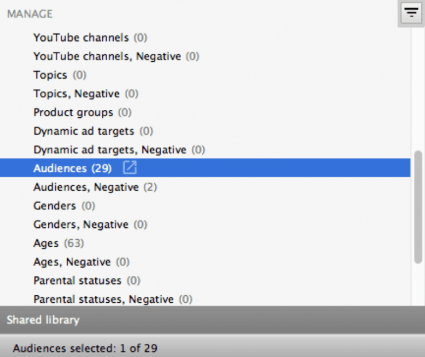
- Click the “+ Add audience” button in the top right and select the Similar Audience you wish to add.

- For a “bid only” Similar Audience, set a bid adjustment based on the conversion event the seed audience is built on and where that conversion event lies in the funnel, or set a 0% bid adjustment if you’d simply like to gather data. For a “target and bid” Similar Audiences, choose the max CPC bid for the audience.
Using the Google Ads Web Interface
To add Similar Audiences using the Google Ads web interface, follow these steps.
- Go into the “Display Network” tab and click the red “+targeting” button in the top left.
- Select the relevant ad group (currently it’s only possible to add exclusions at the campaign level, not targeting).
- Choose “interests & remarketing” in the targeting section of the next page.

- Next, select the “similar to Remarketing Lists” option if you’re building a Similar Audience off a pixel, or the “similar to video viewers lists” option if you’re building a Similar Audience off of video viewers.
- Important Note: Although there’s an option on this page to create a “similar to customer email list” Similar Audience (selected in the screenshot above) or a “customer email list” remarketing audience, Display campaigns can’t target these audiences. Currently, customer email lists can only be targeted on Search (RLSAs), YouTube and Gmail. If you go into the shared library audiences for the account, you’ll see that the Display column is marked “Unavailable” for customer email lists.
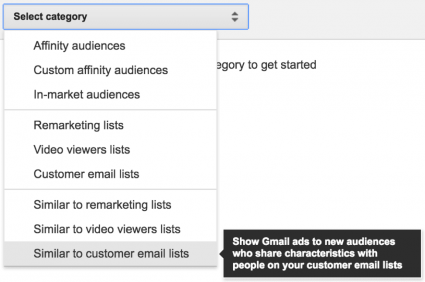
- Important Note: Although there’s an option on this page to create a “similar to customer email list” Similar Audience (selected in the screenshot above) or a “customer email list” remarketing audience, Display campaigns can’t target these audiences. Currently, customer email lists can only be targeted on Search (RLSAs), YouTube and Gmail. If you go into the shared library audiences for the account, you’ll see that the Display column is marked “Unavailable” for customer email lists.
- Google will automatically populate the list with Similar Audiences built from eligible Remarketing Lists that can be applied to the campaign or ad group you’re currently in. Select the audiences you’d like to add from this list, which is shown below:

- Finally, choose either the “target and bid” or the “bid only” option and hit save.

Making The Most Of Similar Audiences
Similar Audiences Best Practices
As with Facebook Lookalike Audiences, Similar Audiences are great for prospecting since they tend to perform better than standard interest-based audiences, in-market audiences, and other audience targeting.
A Similar Audience works a lot like remarketing. As with remarketing, a Similar Audience will probably have less reach than other prospecting audiences. But what’s sacrificed in reach is offset by relevance. Of course, the quality of a Similar Audience depends on the event/audience it’s built from and where it lies in the funnel. For example, a “similar to cart abandoners” audience will be much more qualified than a “similar to site visitors” audience and therefore probably merits a higher bid.
It’s a good idea to experiment with the size of a source audience, since the output Similar Audience size can vary on a case by case basis (seemingly without a clear pattern). This is a clear contrast with Facebook Lookalike Audiences, which scale as a percent of user population in the target country – a 1% Lookalike in the US, for example, has a size of 2 million regardless of how large the seed audience is (although the quality of Facebook lookalikes is impacted by the size of a seed audience).
Using Similar Audiences to Optimize Bids
Using Similar Audiences is also a great way to optimize bids within your existing campaigns. You can do this easily and with little risk by layering all of your existing ad groups with your lowest-funnel Similar Audiences and implementing a +0% bid modifier for those Similar Audiences.
This will let you segment out performance data for any given ad group by how the performance of the layered Similar Audiences compares to the average performance of those ad groups as a whole.
Say, for example, that ad group A has a CPA goal of $20 which is being met. But for the layered “similar to past converters” audience with a 0% bid modifier, the CPA is actually much lower at $10. This means you can set a bid adjustment of +100% for that Similar Audience in order to get more volume from the audience while still achieving the same $20 CPA goal.
Conversely, you could add a negative bid modifier to the non-Similar Audience traffic to increase efficiency if you’re looking to lower costs. Google recommends that you use the following formula in order to calculate bid modifiers for audiences:
(Non-Audience ÷ CPA Audience CPA) – 1 = Bid Modifier
Once you have gathered data on your bid-only Similar Audience layers, apply the above formula to optimize your bids for bid-only Similar Audience layers.
Target and Bid vs. Bid Only
With Similar Audiences, marketers have the option to select either “target and bid” or “bid only” as bidding strategies.
The bid only option allows marketers to layer an audience in an existing ad group and manage targeting via bid adjustments.
If ad group A, for example, has a default max CPC bid for $4 and you wanted to target a “similar to converters” audience for that ad group more aggressively than non-members, you could set a +50% bid adjustment (for example) which means your max CPC bid for “similar to converters” audience members would be $6.
You can also layer multiple Similar Audiences in the same ad group. For example, in ad group A you could set a +10% bid adjustment for “similar to cart abandoners” (a $4.40 bid) in addition to your +50% bid adjustment for “similar to converters” which is lower in the funnel than a cart abandoners audience. This will ensure you capture as much volume as possible for your highest value audiences.
Keep in mind that Google Ads will automatically place an audience member in the highest value audience – the one that you’ve bid the most for – so there’s no need to fear bidding multiple times for a member of more than one Similar Audiences as long as your bid adjustments aren’t exactly the same for each Similar Audience.
The target and bid option, on the other hand, means you’ll exclusively be targeting the Similar Audience in question to the exclusion of all other traffic. This can give you granular control over the CPC bid for that audience, liberating your bids so they don’t have to be anchored down by a relative bid adjustment.
Test Similar Audiences For Yourself
While Google Ads Similar Audiences aren’t as well understood or highly utilized as their Facebook counterpart, they are definitely worth implementing to help improve your GDN, YouTube, and Gmail prospecting campaign performance. In our own accounts, we’ve been seeing a definite improvement in prospecting efficiency when we utilize Similar Audiences; in some cases, Similar Audiences have even rivalled the efficiency of a remarketing campaign.
Getting started with Similar Audiences is both easy and low-risk. Simply navigate to the audiences section within the account shared library and decide on a source audience from existing Customer Match lists for Gmail Sponsored Promotions and YouTube Ad campaigns, or from existing pixel-based remarketing lists for YouTube Ad and Display campaigns.
If the source audience meets the minimum number of cookies or emails, you will be able to select the corresponding Similar Audience built from that source audience to layer within your campaigns. To begin with, you can layer Similar Audiences with a 0% bid modifier to start collecting performance data without risking any inefficiency and adjust bids from there according to the resulting data.


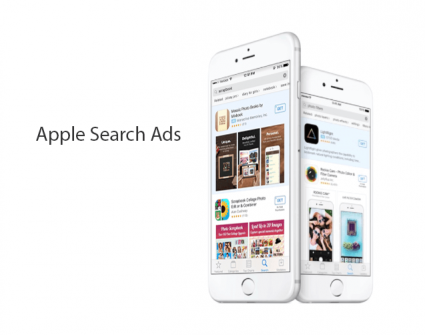
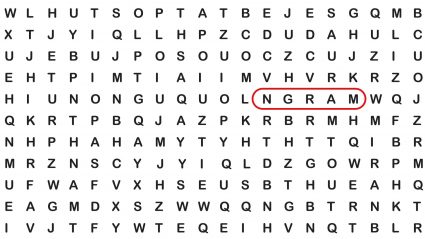

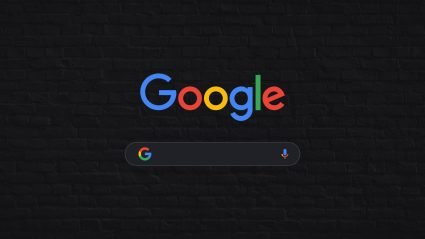

Responses